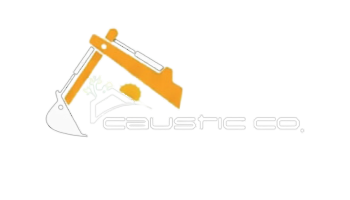A fire’s wake is characterized by the destruction of buildings and the stealthy spread of dangerous residue—among the foremost being asbestos-containing wreckage and toxic chemicals. There may be devastation evident to the naked eye, but beneath smoldering debris lies hidden micro-contamination threatening grave health and environmental consequences. Complete cleanup requires professional intervention, strict protective precautions, and conformity with statutory regulations.
The Hidden Danger: Asbestos Threats in Burnt Buildings
Previously praised for its fire resistance and durability, asbestos is a silent killer if disturbed. Asbestos-containing materials (ACMs)—such as insulation, roofing, and flooring—thermally degrade during a fire and release microscopic fibers into the atmosphere. Inhalation of airborne particulates can lead to debilitating illnesses like mesothelioma, asbestosis, and lung cancer.
Need renovation or decoration services? Click here to contact causticoo.
Identifying Asbestos Dangers After a Fire
Older Buildings: Structures built before the 1980s are more likely to contain ACMs, increasing exposure.
Common ACMs in Fire-Damaged Buildings: Drywall joint compounds, cementitious sheets, pipe lagging, and ceiling panels.
Identifying Contamination: Friable, white particulates following a fire indicate contamination—reduce disturbance and seek professional assessment.
Beyond Asbestos: The Toxic Legacy of Fire
Fires produce a mixture of toxic chemicals from charred consumer and industrial goods. The poisonous brew may include:
Lead-Based Paint Residues: Lead vaporizes under intense heat, dispersing as toxic fumes and dust.
Heavy Metal Contaminants: Burned electronics, batteries, and wiring release mercury, cadmium, and lead—highly toxic elements with long-term environmental impact.
Plastics and Synthetic Materials: Plastics, when burned, create dioxins and furans—potent carcinogens with long-term ecological impact.

Safe Remediation Strategies: A Systematic Approach
A systematic approach is essential, given the dire health implications of improper cleanup. Stringent protocols must be followed to prevent cross-contamination and secondary exposure.
Step-by-Step Guide to Secure Fire Debris Removal
Hazard Identification and Evaluation
Use a certified environmental professional to assess asbestos, heavy metal pollution, and remaining toxins.
Air monitoring is used to detect respirable particulate matter (PM2.5, PM10).
Required Personal Protective Equipment (PPE)
Respiratory Protection: Microscopic toxin filtration is done with a NIOSH-approved P100 respirator.
Protective Clothing: Disposable coveralls, impermeable gloves, and full-seal eye protection reduce dermal exposure.
Decontamination Areas: Establish organized decontamination areas to avoid dangerous material migration.
Containment and Controlled Debris Handling
Moisture Suppression Methods: Light misting of ACMs minimizes fiber dispersion.
HEPA Filtration Systems: Industrial HEPA vacuums successfully trap sensitive particulate matter.
Regulated Waste Disposal: Double-bagging contaminated debris in certified hazardous waste containers guarantees legal disposal.
Our other services : Safe Disposal of Asbestos After Earthquakes
Compliant Disposal of Toxic Waste
Certified Disposal Sites: Hazardous leftovers must be shipped to EPA-approved treatment facilities.
Stringent Documentation: Keep comprehensive records to meet regulatory compliance.
Illegal Dumping Consequences: Unauthorized dumping welcomes significant fines and environmental lawsuits.
Regulatory Structure: Environmental and Legal Compliance
Governmental authorities closely monitor post-fire cleanup. The Environmental Protection Agency (EPA) and Occupational Safety and Health Administration (OSHA) apply stringent safety guidelines.
Significant Regulations Governing Cleanup Activities
EPA Asbestos NESHAP Standards: Calls for stringent removal, transport, and disposal of ACMs.
OSHA Worker Protection Requirements: Enforces PPE and exposure threshold limits.
Local Hazardous Waste Directives: Local laws require jurisdiction-specific compliance regulations.
The Requirement for Professional Abatement Services
Because of the potential for post-fire contamination, remediation handling should be left to professionals. Professional abatement teams keep safety guidelines in place while reducing exposure risks.
Advantages of Engaging Certified Cleanup Professionals
In-Depth Risk Evaluation: Specialized testing identifies remaining risks.
Compliance with Standards: Trained professionals adhere to hazardous waste disposal standards.
Methodical and Detailed Decontamination: Sophisticated equipment optimizes safe decontamination.
Minimizing Future Risks: Preventive Safety Measures
Adopting preemptive measures reduces the risk of toxic exposure in future fires.
Optimal Practices to Minimize Hazardous Exposure
Employ Fire-Resistant Substitutes: Employ non-toxic, fire-resistant materials for construction.
Keep Chemicals Safely Stored: Store hazardous chemicals in fire-resistant containers.
Conduct Periodic Inspections: Periodic asbestos checks in older buildings minimize surprise risks.
Conclusion
The devastation of the fire reaches beyond the outward destruction, involving a matrix of dangerous contaminants that require careful remediation. Asbestos exposure and poisonous chemical residue are heavy risks and need expertise, regulatory adherence, and strict safety protocols. Never try to deal with fire-damaged debris on your own.
Contact certified remediation professionals who adhere to safety and environmental stewardship for expert asbestos abatement services in Canada.



